Have you ever used a film developer that suited all of your needs at once? Every black and white film developer out there has a trade-off.
Either it lasts forever, but makes film grainy like Rodinal. Or it creates beautiful, fine-grain negatives, but comes in a powder (D-76, Xtol, or Microphen). Or worse, it’s an incredibly versatile liquid developer, but it’s expensive and only lasts 6 months in a full, stoppered bottle like DD-X and HC-110.
That’s where Flic Film’s Black White and Green film developer comes in. This single developer has the best of all three worlds. So how does this film developer rate against other black and white film developers:
5 out of 5 stars: Flic Film’s Black, White, and Green is the closest thing to the perfect black and white film developer. It comes in a liquid format, creates fine-grain negatives with extra shadow detail, lasts forever, and is environmentally friendly.
I’ve developed more than 10 rolls of film using this developer, and it’s safe to say this has become my go-to film developer.
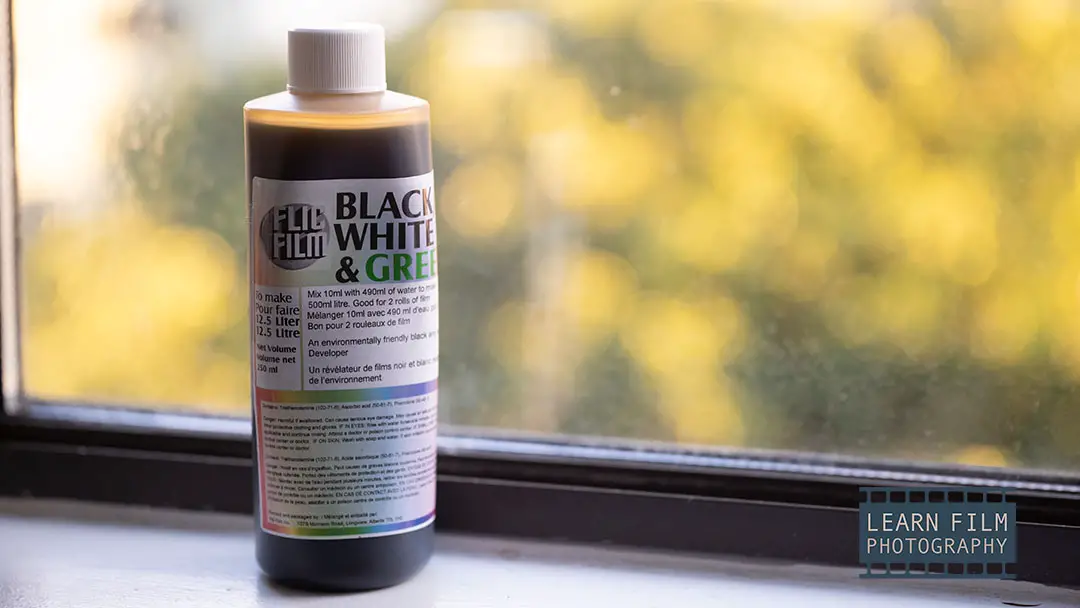
What is Flic Film’s Black, White, and Green developer?
Black, White & Green is a developer made by Canadian film chemical producer Flic Film. It’s based on a classic home brew phenidone and Vitamin C formula called PC-TEA (learn how to make your own here).
Phenidone and Vitamin C are also the developing ingredients used in Kodak’s Xtol, which is the most environmentally-friendly commercial developer on the market.
It’s also one of the developers known to produce professional results by capturing more shadow details than standard developers. But since Kodak sold off their film developer division, the products have been reformulated in a way that caused them to die prematurely inside the packaging.
Flic Film solves that problem by removing all water from the liquid formula by dissolving the chemicals in superheated triethanolamine (used as a pH balancer in shampoos and soaps). The process leaves behind a stable, thick liquid developer that will not oxidize after opening.
The developer is made in a similar way to Kodak’s old, syrupy HC-110 formula that used to last forever. The newer, liquid reformulation made by the manufacturers in 2019 doesn’t last nearly as long.
That means Black, White, and Green and Rodinal are the only two film developers with a useful shelf life beyond six months after opening.
How to use Black, White, & Green developer
Flic Film’s Black, White, and Green film developer only needs 10ml of solution per roll of 120 film, or two rolls of 35mm. That means one 250ml bottle can develop 25 rolls of 120, or 50 rolls of 35mm.
Because of its extreme concentration, this is one of the most economical film developers on the market. Especially when you consider that a bottle of DD-X, coming in at the same price needs 100ml to develop the same amount of film.
The liquid is in an extremely viscous state, meaning it pours very slowly and requires some agitation to mix in water. The best way that I’ve found to use this developer is to fill my 50ml graduated cylinder with 20ml of water, and then pour the developer on top of the water up to the 30ml mark.
Then, I fill the graduated cylinder, and stir the contents using my slick Paterson thermometer before mixing the solution into my 500ml beaker.
Always fill the graduated cylinder to the top a couple more times to get the entirety of the developer solution out into the beaker.
Before using this method, I always had a horrible time getting the entirety of the developer out of the graduated cylinder. Some people use a syringe, which will help measure more accurately, but that’s just one more unnecessary product to find space for on my shelf.
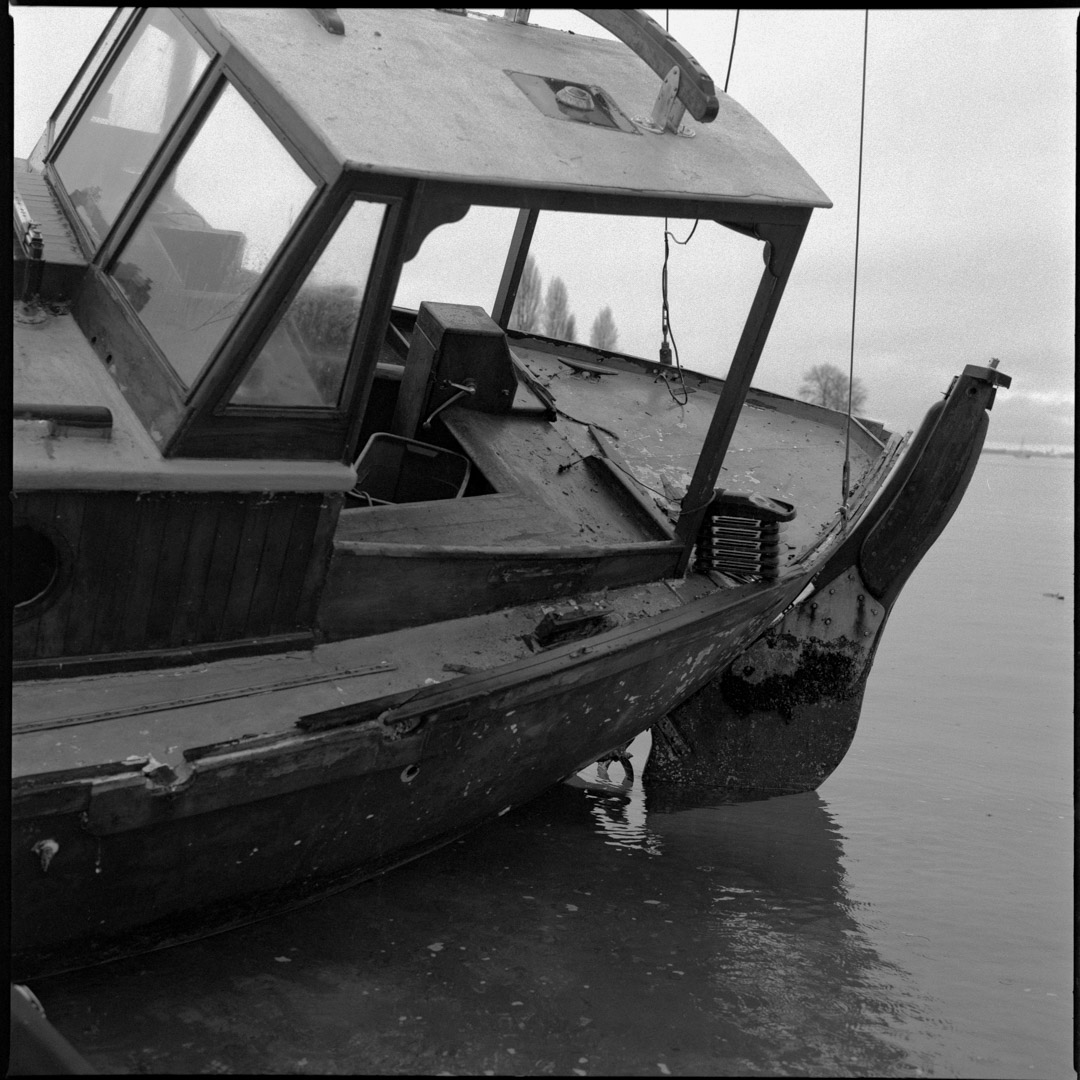
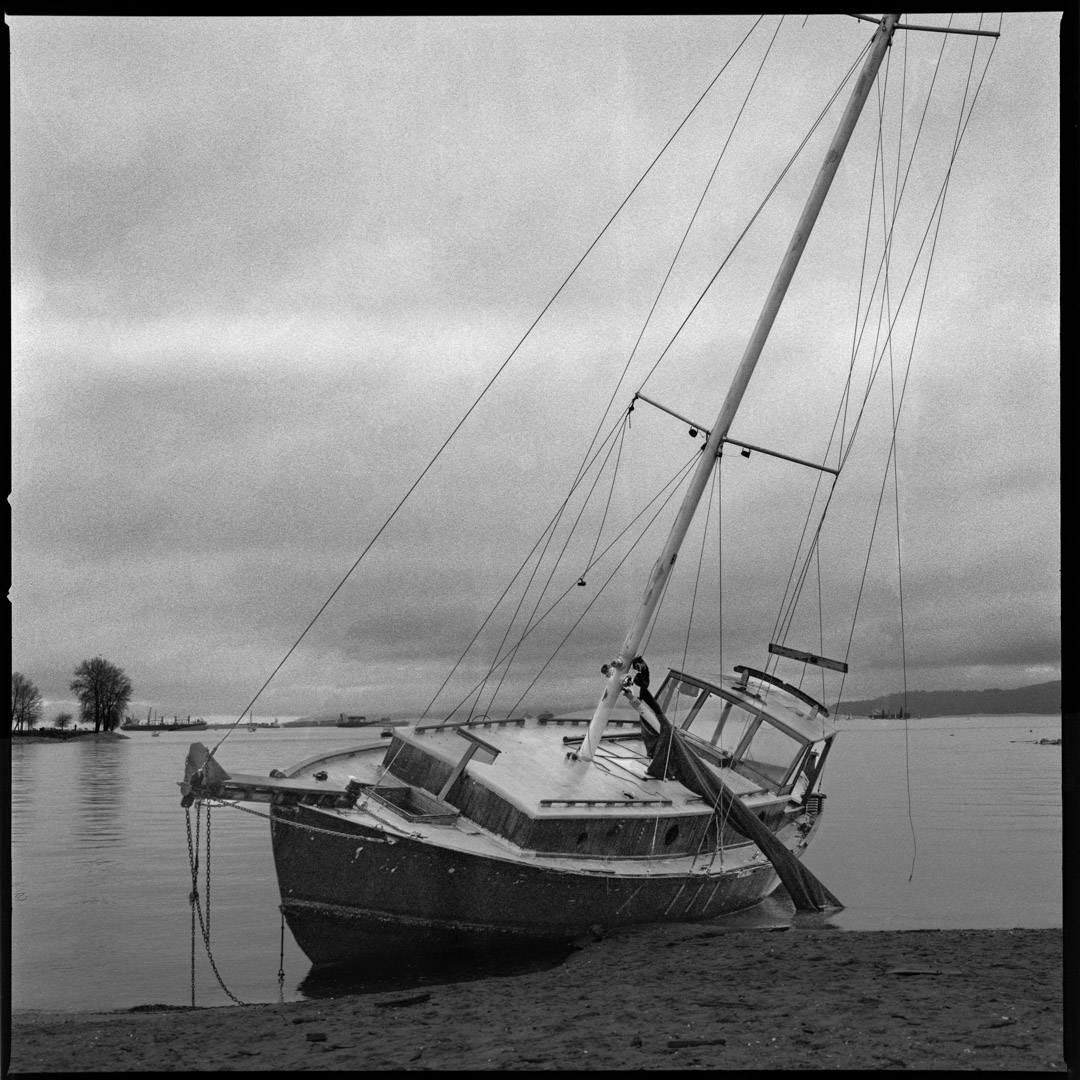
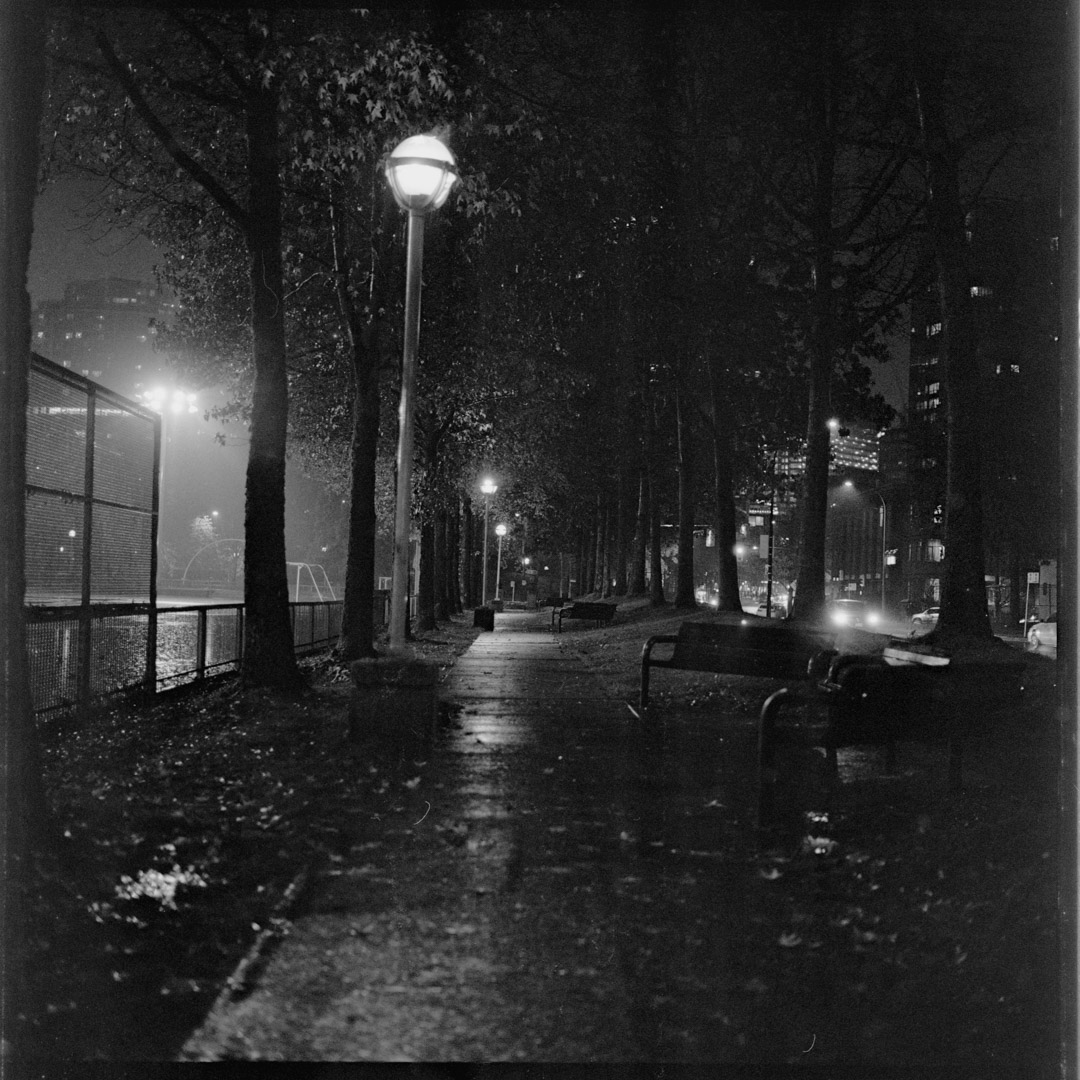
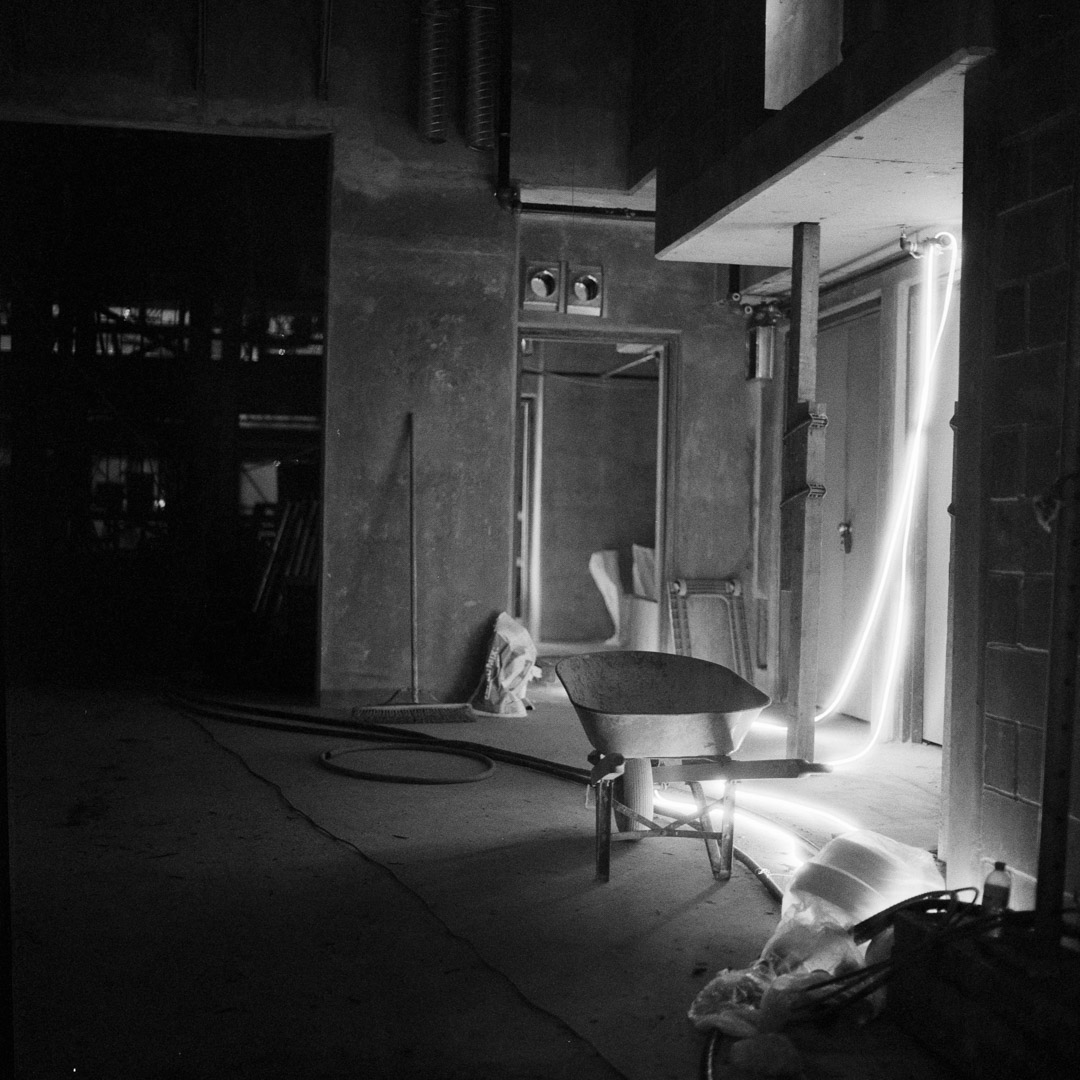
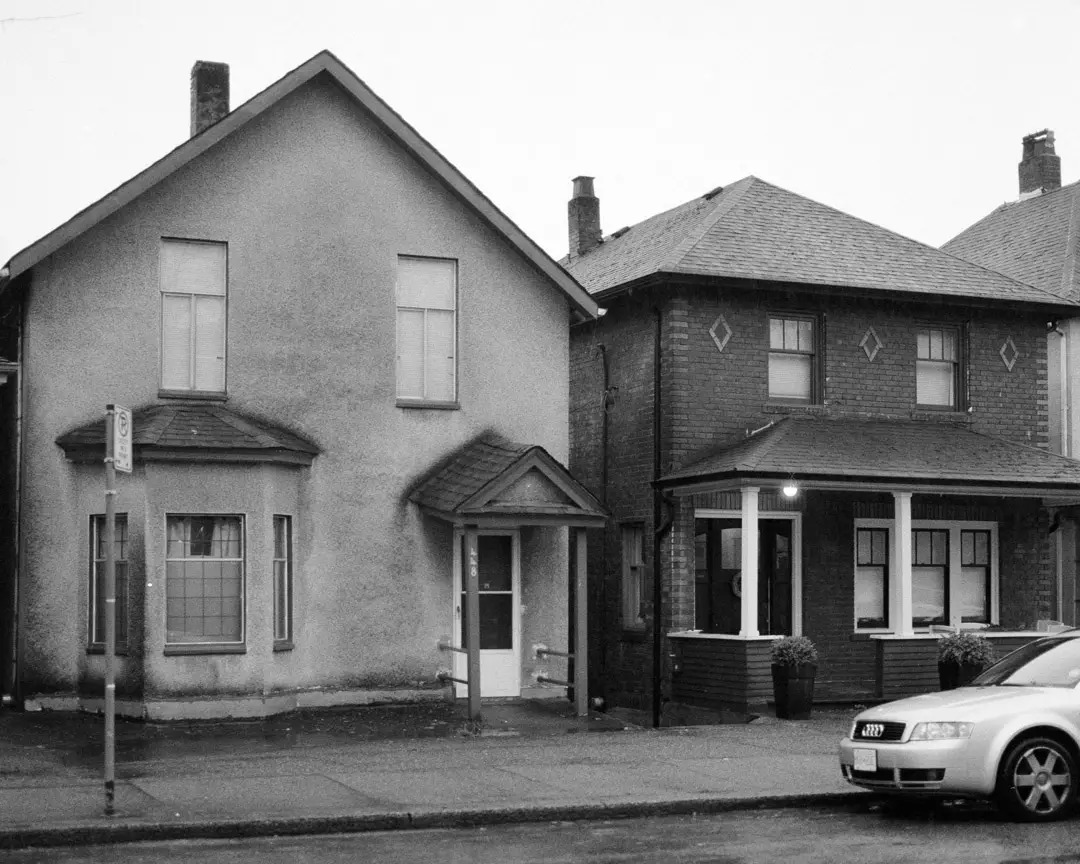
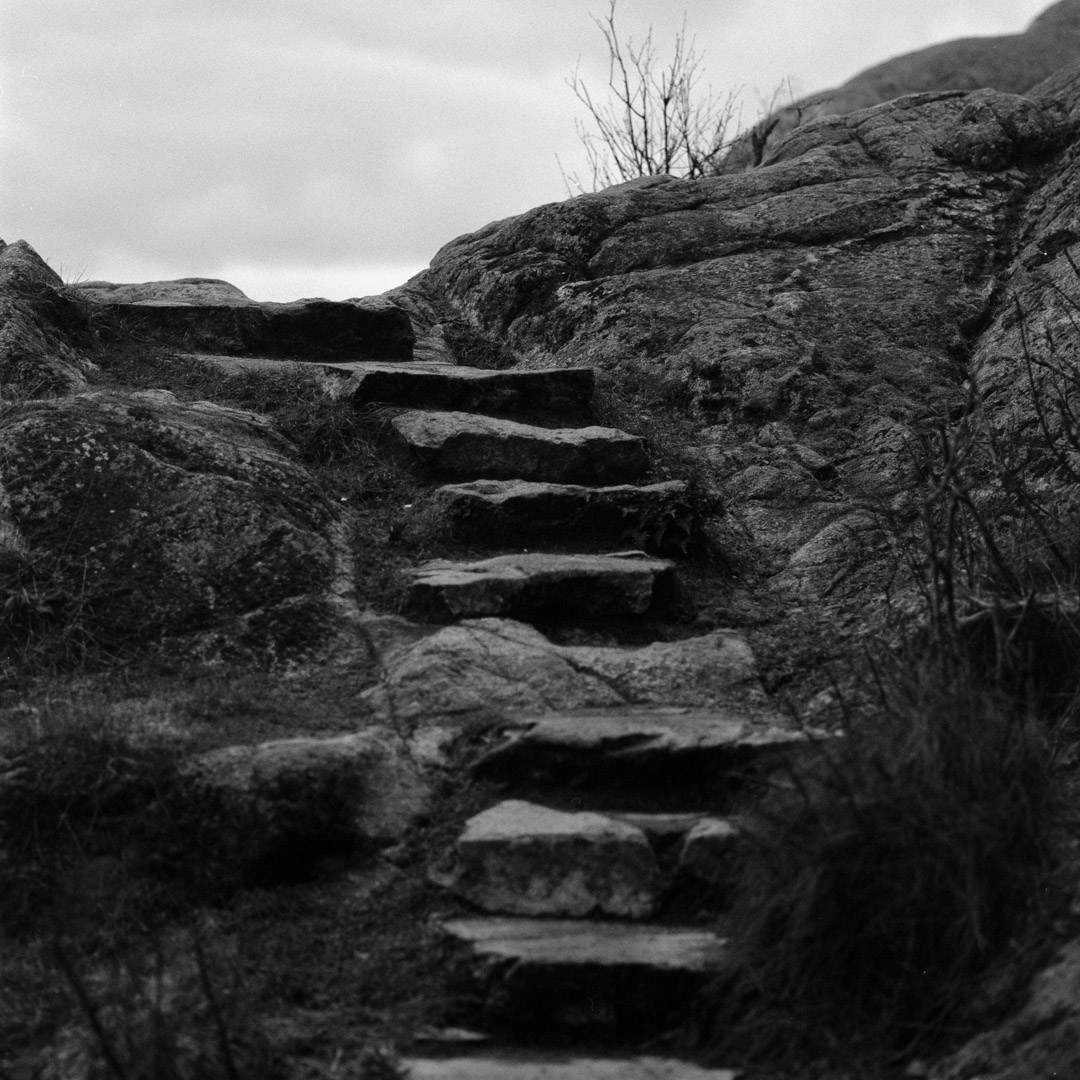
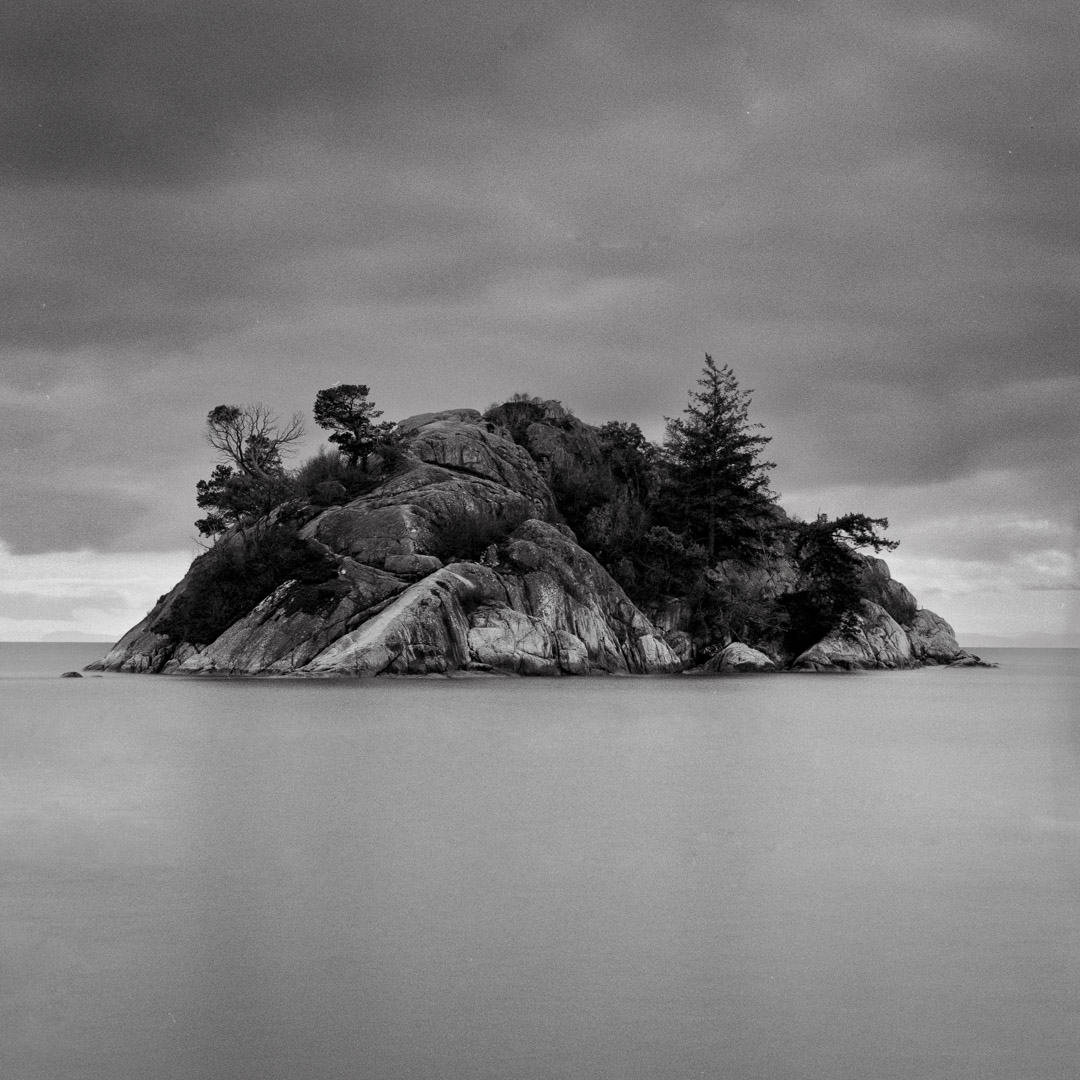
How do the negatives look? Black, White, and Green compared
Black, White, and Green creates negatives with fine-grain and bright shadows. The negatives have good shadow density and tonality almost to the same level as DD-X.
Flic Film’s developer also creates sharper negatives than D-76 (but not as sharp as Rodinal).
Overall, when using this developer, negatives will come out looking flat. That means the images won’t look as good with a straight conversion in Negative Lab Pro, or in print with no filter. But this is actually a desired trait by professionals because it means they can add their own contrast where they want it!
To get a flatter negative, the film developer also contains more restrainer than traditional film developers. That means the development times are longer, but it gives the developer more time to develop the shadow regions.
These attributes make BW&G a fantastic all-around developer that will give good results in almost every situation. Other developers do some things slightly better, but I don’t think the results are so different that someone could look at a print and say for sure which developer was used.
Why this developer is so good at pushing film
Black, White, and Green is a low-contrast film developer, meaning that your negatives will come out flatter than most other developers on the market. But the real reason this film developer is so good at pushing is because it is a slow developer.
As mentioned above, BW&G has some restrainers in the developer solution that slow down film development. When pushing the film, the lab (or you at home) will leave the film in the developer longer than normal.
Because this is a new film developer, there aren’t any pushing recipes available on the Massive Dev Chart, or even any instructions given by the manufacturer.
For pushing film with Black White and Green developer, I have successfully used the 30% rule, where you add 30% onto the standard developing time for each push. Learn more in this article about getting the best results when pushing and pulling film.
The images were incredible. A 2-stop push with HP5 (the best Black and White film ever created) looks almost the same as regularly developed film, with little extra contrast.
Are there any downsides to BW&G?
Like everything, there are a couple of downsides to this developer.
The main one is that because it is a new developer, it doesn’t have that many developing recipes for pushing and pulling, or for some B&W film stocks. For example, the Rollei film stocks are notably absent from Flic Film’s developing times on the Massive Dev Chart.
To get the right development time, you will have to know if your film is rebranded from another manufacturer, and if it isn’t, then you may have to make a few tests with developing times before you’re able to create consistent results.
BW&G is also new to the market, so it may be difficult to find outside of the US and Canada in its present form. Although I think that will change overtime, as the manufacturer finishes building his factory and starts promoting their products around the world.
The last downside for some photographers is that this developer can take a long time to develop film. If you have a backlog of B&W films to get through, the 12-16 minute development times add up quickly. I like to use multiple tanks at one time to speed up my process, but that can get confusing for new film photographers.
And I’ll admit, I don’t always follow the times exactly. I have developed two rolls that required different dev times in the faster listed time, and they both came out well. But that’s not a risk that many new film photographers should be taking on. Do as I say, not what I do, right?
Final thoughts
Flic Film’s Black, White, & Green is nothing short of phenomenal. This is the developer that I have been waiting for. The long shelf life and results similar to DD-X, with the environmental footprint of Xtol make this the perfect developer for my style.
This developer simply blows HC-110 and D-76 out of the water. I don’t think I’ll ever use those developers again. And even though Black White and Green isn’t quite as good as DD-X, the lower price, increased stability, and way better environmental footprint make the results a very easy tradeoff for me.
I don’t think you could ever look at a film negative and tell exactly what developer was used — unless it was caffenol, Rodinal, or some kind of staining developer, but that’s another story.
So Black, White, & Green has become my go-to developer. I don’t think I’ll ever turn back.

By Daren
Daren is a journalist and wedding photographer based in Vancouver, B.C. He’s been taking personal and professional photos on film since 2017 and began developing and printing his own photos after wanting more control than what local labs could offer. Discover his newest publications at Soft Grain Books, or check out the print shop.

Just gave this a try with some Eastman 5222 and it’s fantastic. Eleven minutes in the dev and fixed with Ilford Rapid Fixer. The images came out perfect. This is my new favorite developer!
Awesome! I’m glad to hear it! It’s still my favorite as well! I don’t think I’ll ever go for a film developer that expires in a couple months again, since this one is just so reliable.
I’ve just developed my first roll with BW&G, Acros100 II. Haven’t scanned it yet, it is still hanging to dry, but it looks very good so far. Nice density and nice range. Seems very sharp but will know better once scanned. This was 120 shot with a Yashica D.
That’s awesome to hear! Great combination here. There’s no better developer than BW&G in my view.
I’m sold. I’ve used XTOL for years, but have been burned a few times on the shelf stability issue. I’m not shooting a really big volume right now, so stability is critical. This checked all of the boxes when I was shopping for a replacement. I just processed my first roll with it (Arista 400) and the results are as good or better than anything I’ve gotten with other developers.
Glad to hear it! This is my favorite developer for exactly the same reasons.
I’m still relatively new at home developing still and have been using water as a stop bath developing with D-76 1+1. Will water work with BW&G as a stop bath or do you recommend a commercial stop bath?
Hi Steven, I actually don’t use a stop bath with any black and white anymore. Despite that, I’ve still gotten great results using BW&G, even after developing a ton of film with it by now. But I would recommend using a neutral fixer when you don’t use a stop bath, as the neutral fixer won’t burn out as quickly when it comes into contact with any trace amounts of developer.
Thank you very much!